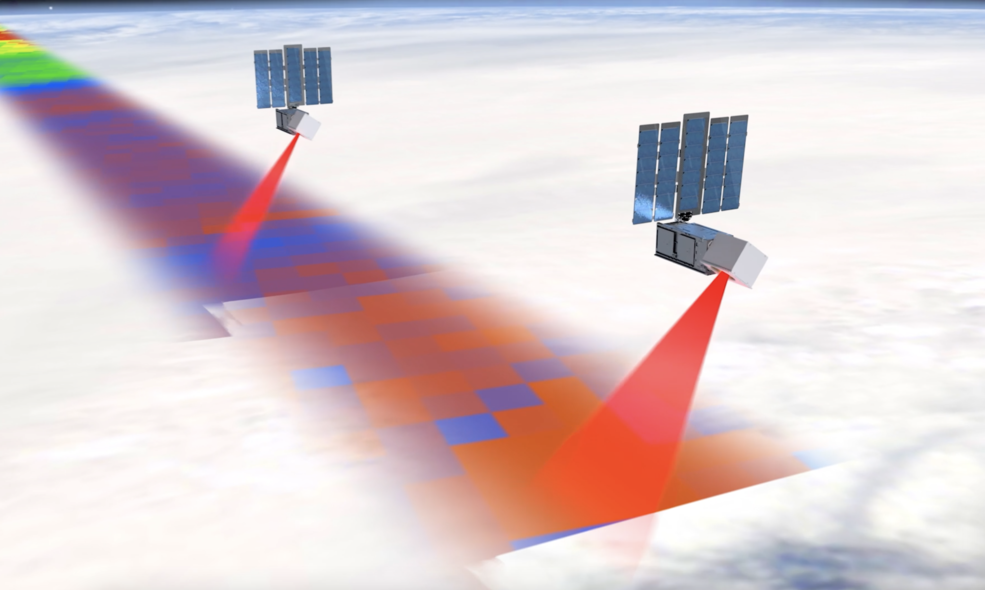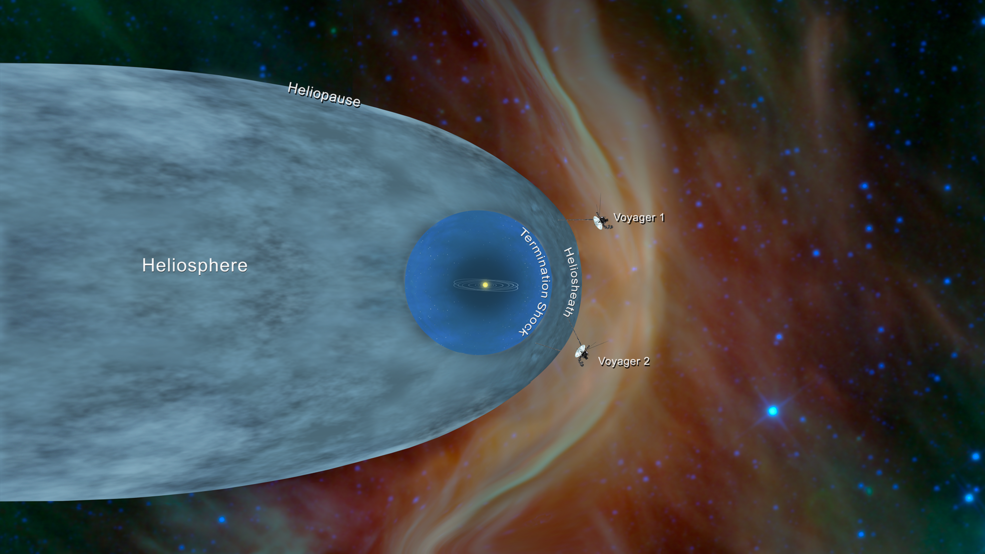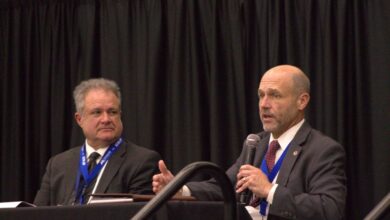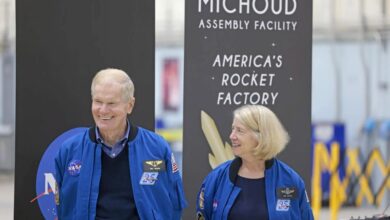NASA’s LRO Finds Photo Op as It Zips Past SKorea’s Danuri Moon Orbiter

NASA’s LRO (Lunar Reconnaissance Orbiter), which has been circling and studying the Moon for 15 years, captured several images of Korea Aerospace Research Institute’s Danuri lunar orbiter last month. The two spacecraft, traveling in nearly parallel orbits, zipped past each other in opposite directions between March 5 and 6, 2024.

The dark spot centered in the bottom third of this image is the Korea Aerospace Research Institute’s Danuri orbiter, smudged because it was traveling quickly in the opposite direction of NASA’s LRO (Lunar Reconnaissance Orbiter) when LRO snapped the photo. At the time, Danuri was orbiting 5 miles, or 8 kilometers, below LRO’s orbit, and LRO was about 50 miles, or 80 kilometers, above the Moon’s surface. This image covers an area about 2 miles, or 3 kilometers, wide.
NASA/Goddard/Arizona State University
LRO’s narrow angle camera (one in a suite of cameras known as “LROC”) captured the images featured here during three orbits that happened to be close enough to Danuri’s to grab snapshots.
Due to the fast relative velocities between the two spacecraft (about 7,200 miles, or 1,500 kilometers, per hour), the LRO operations team at NASA’s Goddard Space Flight Center in Greenbelt, Maryland, needed exquisite timing in pointing LROC to the right place at the right time to catch a glimpse of Danuri, the Republic of Korea’s first spacecraft at the Moon. Danuri has been in lunar orbit since December 2022. Although LRO’s camera exposure time was very short, only 0.338 milliseconds, Danuri still appears smeared to 10 times its size in the opposite direction of travel because of the relative high travel velocities between the two spacecraft.
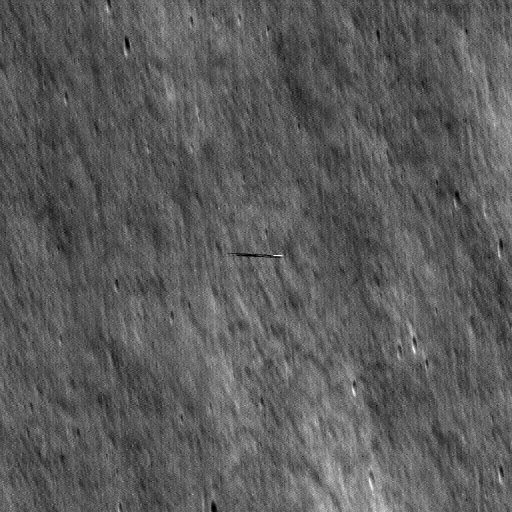
At the first imaging opportunity, LRO was oriented down 43 degrees from its typical position of looking down at the lunar surface to capture Danuri (streaked across the middle) from 3 miles, or 5 kilometers, above it.
NASA/Goddard/Arizona State University
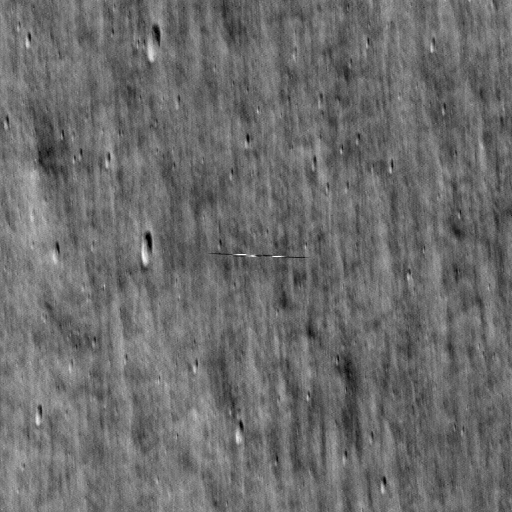
During the next encounter, LRO was closer to Danuri, about 2.5 miles, or 4 kilometers, and oriented 25 degrees toward it.
NASA/Goddard/Arizona State University
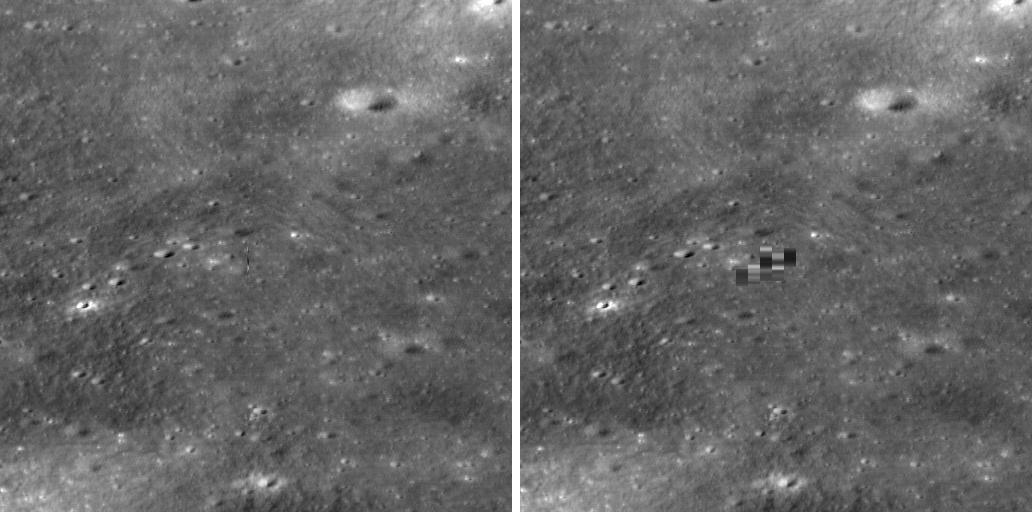
For the final photo, LRO was reoriented by 60 degrees to catch a glimpse of Danuri when it was 5 miles, or 8 kilometers, below it. This image pair was corrected for viewing geometry, and, on the right, the Danuri pixels were unsmeared and the image stretched to highlight the Korean spacecraft. The image was rotated 90 degrees so the surface would look like something a person would see looking out the window.
NASA/Goddard/Arizona State University
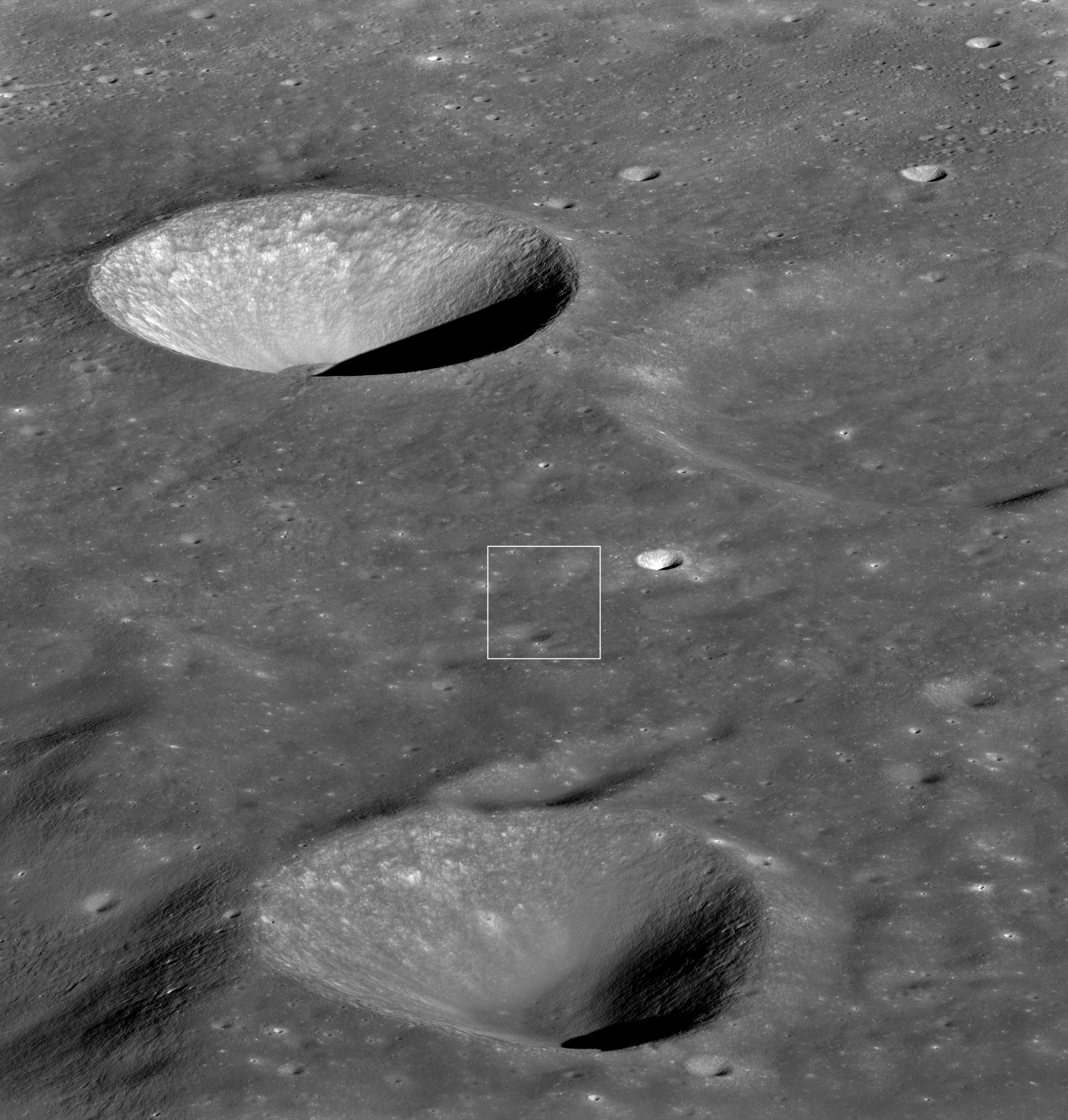
This image shows Danuri in the white box near the right-hand corner of the image. The large bowl-shaped crater visible in the upper left is 7.5 miles, or 12 kilometers, wide.
NASA/Goddard/Arizona State University
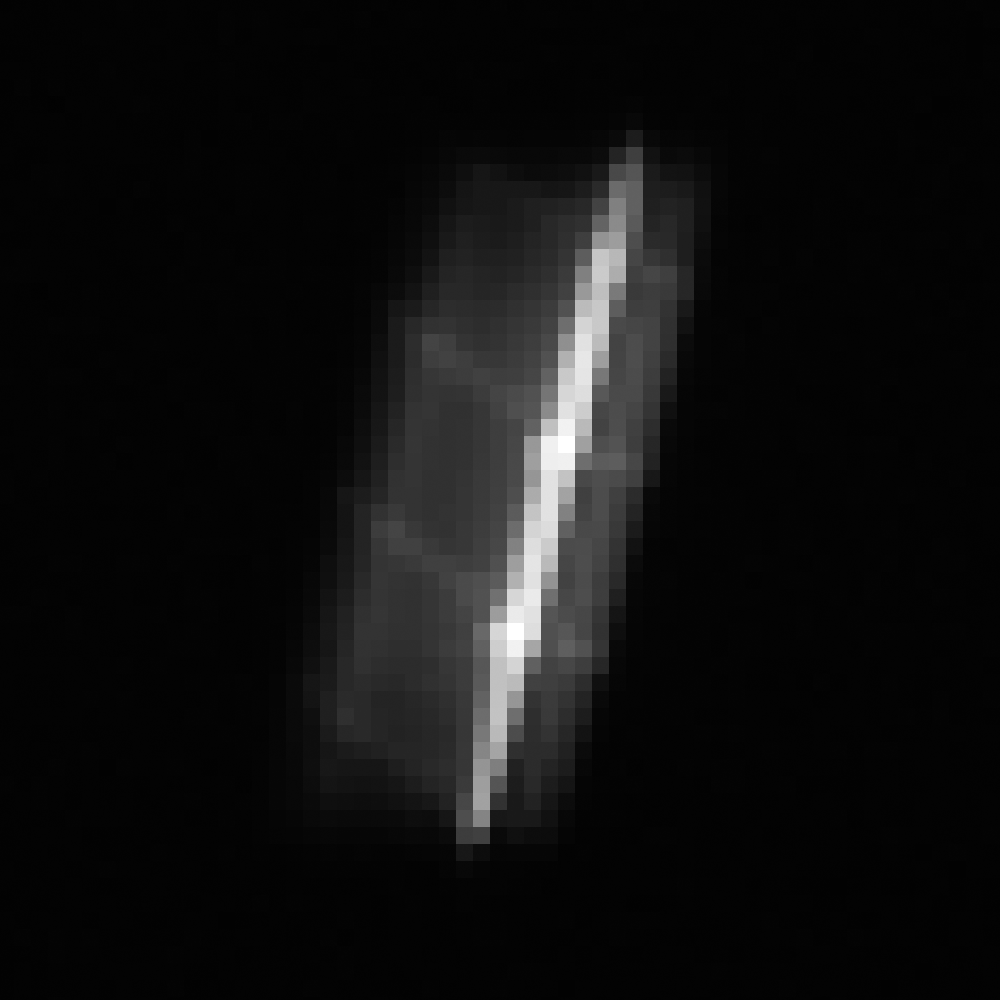
Last spring, Danuri had an opportunity to photograph LRO. Its ShadowCam instrument, provided by NASA, snapped this photo of LRO as the Korean spacecraft passed about 11 miles (18 kilometers) above it on April 7, 2023. Based on the design of LRO’s narrow angle cameras, the ShadowCam was built to take high-resolution images of the Moon’s permanently shadowed regions, where frozen water is likely trapped. The relative velocity between the two spacecraft was about 7,000 miles, or 11,000 kilometers, per hour.
NASA/KARI/Arizona State University
LRO is managed by NASA’s Goddard Space Flight Center in Greenbelt, Maryland, for the Science Mission Directorate at NASA Headquarters in Washington. Launched on June 18, 2009, LRO has collected a treasure trove of data with its seven powerful instruments, making an invaluable contribution to our knowledge about the Moon. NASA is returning to the Moon with commercial and international partners to expand human presence in space and bring back new knowledge and opportunities.
More on this story from Arizona State University’s LRO Camera website
By Mark Robinson, Arizona State University, Tempe, and Lonnie Shekhtman, NASA’s Goddard Space Flight Center, Greenbelt, Md.


